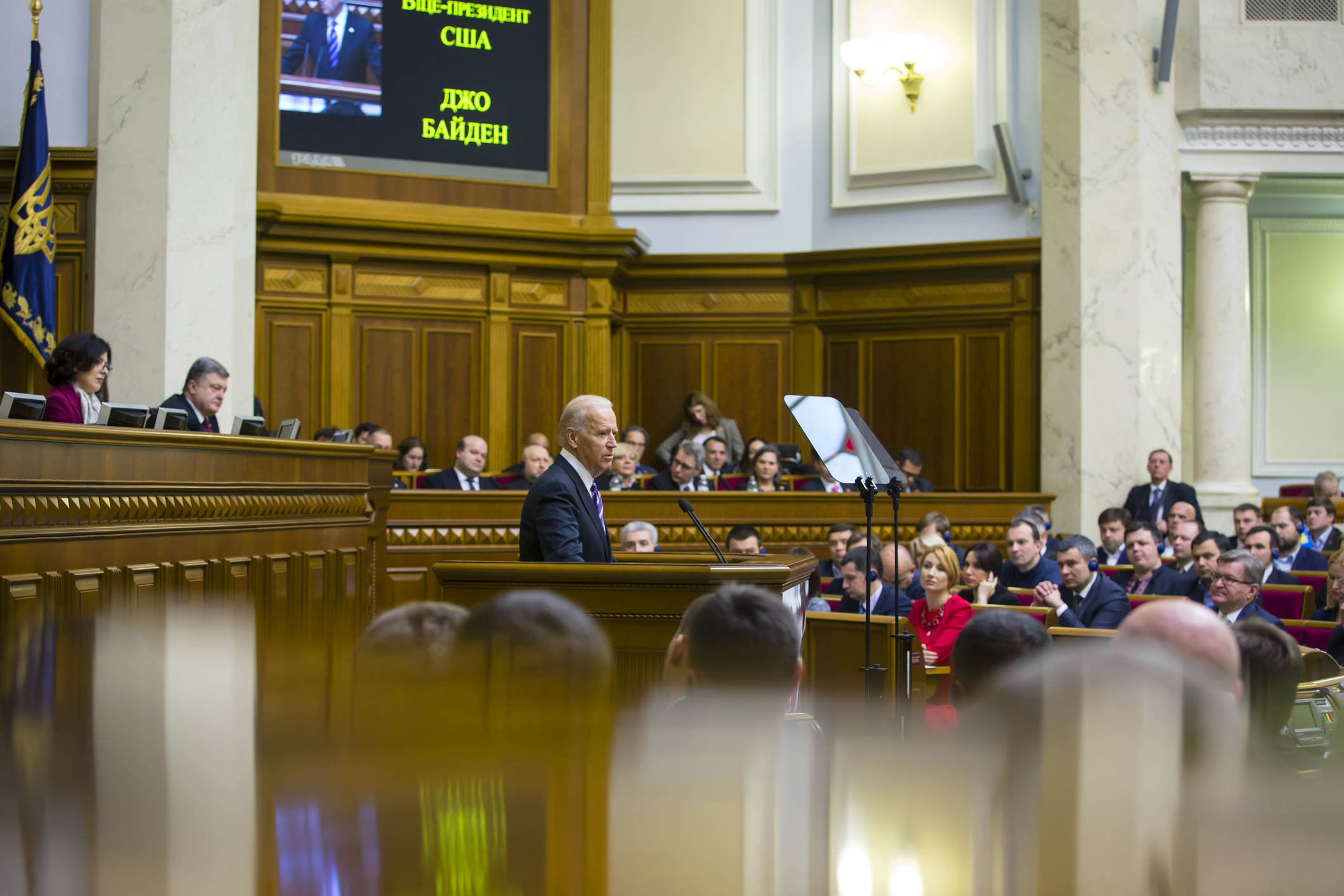By LGen (ret) Michel Maisonneuve
U.S. Secretary of Defense Lloyd Austin and Secretary of State Anthony Blinken visited Kyiv on April 24th to provide support and highlight the determination of the U.S. to stand with Ukraine as Russia’s invasion continues its attempt to conquer a free country. Austin stated “We want to see Russia weakened so that it can’t do the things that it has done in invading Ukraine.”
What are we to deduce from that declaration? First of all, nothing in diplomacy is ever stated without a deeper meaning. When diplomats coming out of a meeting say “we had a frank and robust discussion”, it means they nearly came to blows. So in the case of Austin, what could he have meant?
Make no mistake, this was a huge turning point. The U.S. is now fully engaged in the war; they have publicly stated that they have skin in the game, and they will not allow Ukraine to lose. During his statement, Austin could not help himself from using “we” when he was speaking about Ukraine’s capabilities, firmly engaging his country.
The U.S. will be content to use the conflict as a proxy war being fought by the Ukrainians (and very well, by the way) on behalf of NATO and the United States. American soldiers will not overtly be committed to the fight, but the U.S. and NATO will provide all the means necessary for Ukraine to fight and win.
In terms of degrading Russia’s ability to fight in future, there would be in-depth defensive positions built by Ukraine in the Donbass that will draw in the Russian forces and attrit them as they advance. Destroying tanks, armoured personnel carriers, airplanes, and other equipment will reduce the Russian inventory, unfortunately killing hundreds of young Russian (mostly) men conscripted for service to Mother Russia, but who had not expected to attack a peaceful country next door.
The economic sanctions imposed on Russia will hopefully remain, and render the immediate rebuilding of their forces impossible. Seeing the desolation and destruction of Mariupol and other cities, a huge reconstruction effort will be insisted upon by the international community after hostilities end.
There are reports of intelligence sharing between the U.S. and Ukraine which may have led to the sinking of Russian warship Moskva and other battlefield successes. There may be many countries’ “advisors” present on the ground in Ukraine providing support, advice and counsel to the defenders. Reports are also coming in of Ukrainian counter-attacks across the Donbass front.
All hopes are for a successful defence, and the West hopes not to have to put boots on the ground. But as a former U.S. Army Chief of Staff has stated, “hope is not a method” and the problem is that Putin will continue to use his nuclear arsenal as a blackmail tool, even if Ukraine wins. A coalition of the willing ground campaign could quickly drive him out of Ukraine and shorten the war, saving countless lives. To reduce the danger of nuclear weapons being used, non-nuclear nations could be used in the fight.
Add to this situation the different conflagrations that have destroyed some of the infrastructure in Russia, the unexplained death of several oligarchs and their families – one has to ask questions as to who might be behind all this. Are the CIA, MI6, other agencies, or some of NATO’s special forces active in Russia? Or are Russians themselves, appalled at a “special military operation”, finding targets to sabotage?
Is Putin losing his grip on the nation? His apology to Israel’s Bennett after comments by his Foreign Minister shows he cannot control everything; Lavrov may yet develop what the Soviets used to call a “cold” and go missing. There is no doubt that as the failed invasion rages on, it will be more and more difficult for Putin to hide the brutality of his regime.
The Transnistria region has been identified by a Russian general as their next objective. Unfortunately, their defeat in Kyiv, and their current difficulties in the Donbass should remind them to focus on one success at a time, and not look beyond their current effort.
Coming back to Ukraine’s objective, if it is to attrit Russian forces to the maximum, Ukraine may remain on the defensive until Russia’s effort has been blunted, then go on to the offensive to re-establish their borders. It is difficult to predict when this may take place; unfortunately, Russia is also content to bomb, shell and destroy civilian and military targets indiscriminately from a distance while they attempt to take the Donbass with – so far – little success. Recent reports surmise that Russia could be running low on ammunition.
Finally, the issue of Crimea remains to be dealt with. If Russian forces are sufficiently weakened and the borders of Ukraine are re-established, will there be a move to return Crimea to Ukraine? Or is there a sense that Crimea has de-facto become Russian territory?
Whatever the outcome, the U.S. will not let Ukraine lose, and we will likely be going back to the Cold War days when U.S. and Canadian forces were deployed permanently in Europe as part of NATO. The Soviet bear has morphed into a Russian bear.
LGen (ret) Michel Maisonneuve is a former Canadian Army officer who served as Assistant Deputy Chief of the Defence Staff of Canada and Chief of Staff of NATO’s Allied Command Transformation in Norfolk. He is currently a Senior Defence Associate at Samuel Associates.
This article was published by Front Line Defence on May 7, 2022.
Featured photo: KIEV, UKRAINE – Dec 08, 2015: Vice president of USA Joseph Biden during his speech in the Verkhovna Rada of Ukraine, Kiev


